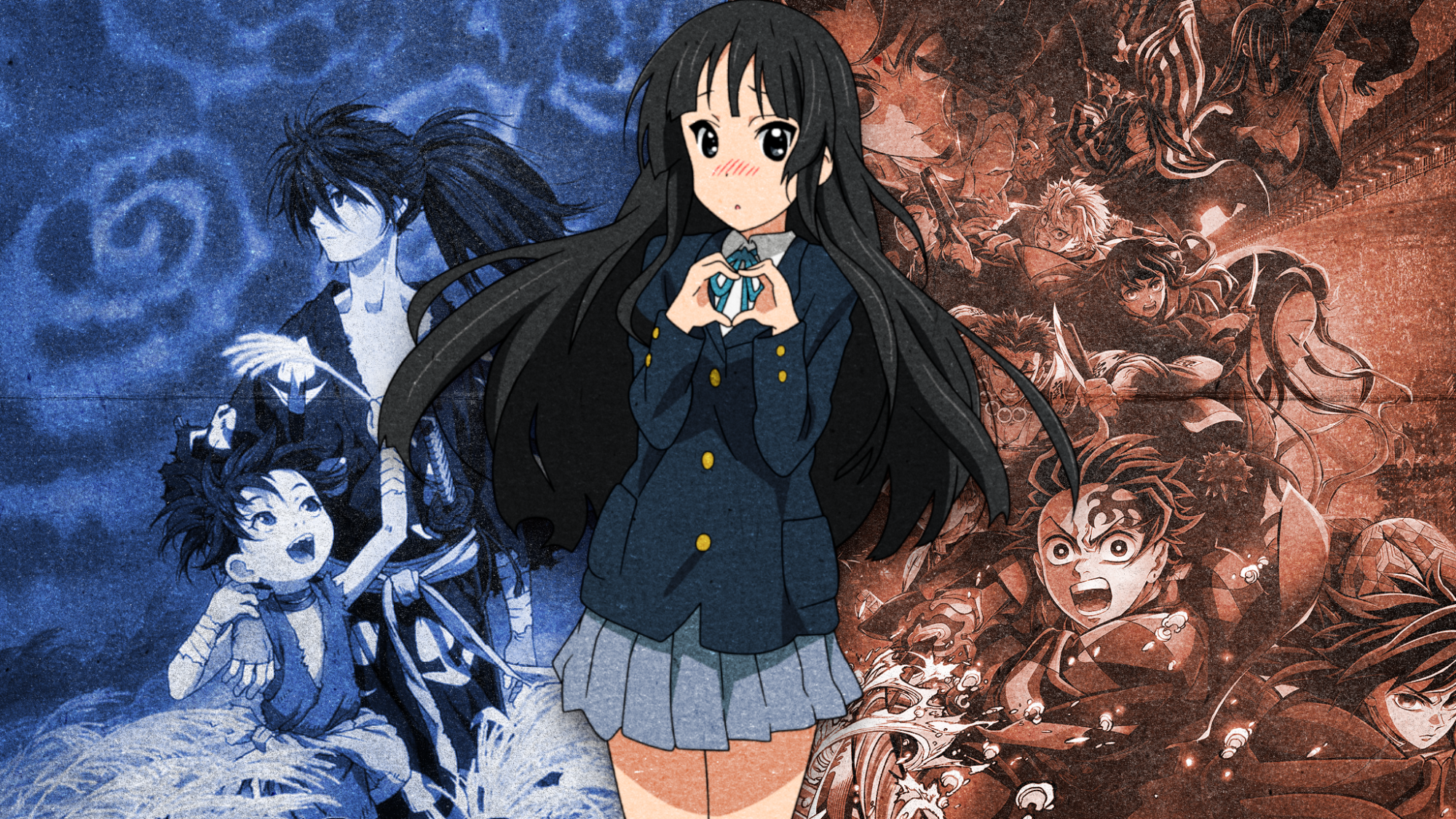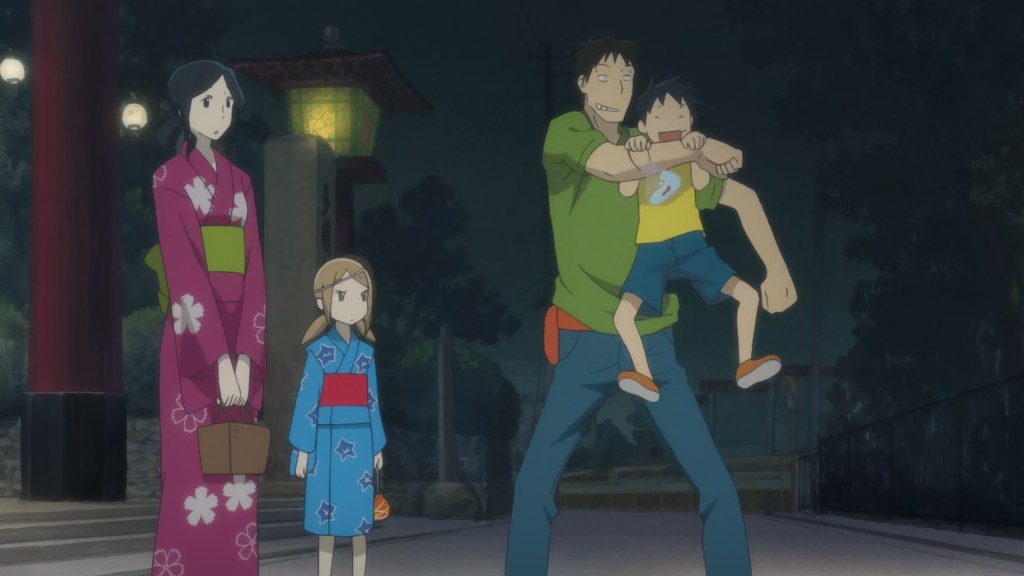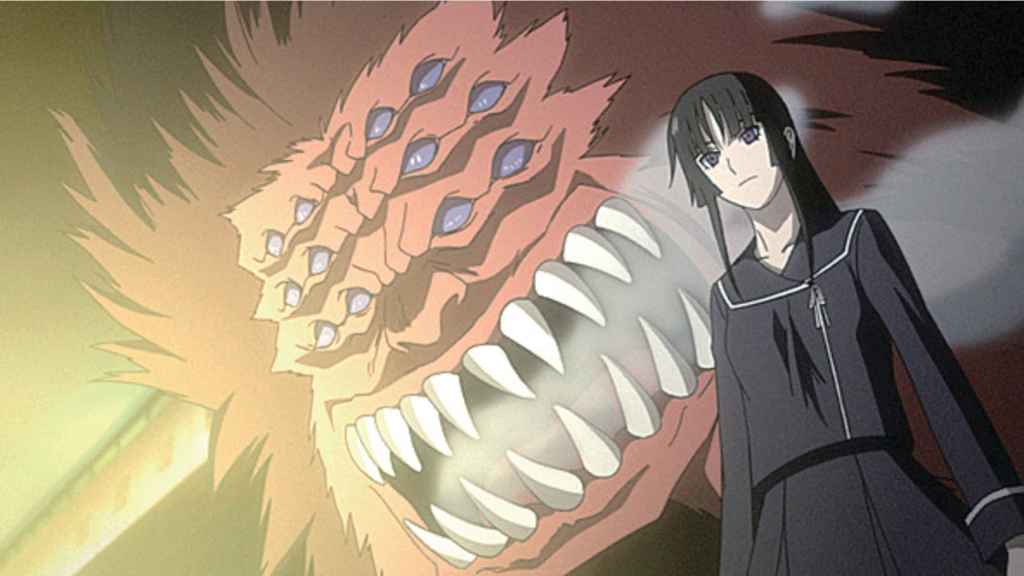
For its whole history, one of the most troubling parts of anime has been its relationship to its source material. For any given adaptation, there are inevitable arguments about whether the source or the anime is better. With the industry looking toward using anime to save failed manga, these discussions might just intensify. For others, though, the situation is pretty cut-and-dry.
At this point, we’ll be earnest and say that not all of these manga are horrible; in fact, some of them are pretty great. The industry has a built-in filter—if a manga gets an anime, it’s probably already pretty decent. After all, animation studios don’t have infinite resources to work with. Nonetheless, there are countless incredible anime that outshine their manga renditions. Whether by making sense of a dense forestry of illegible paneling, expanding paper-thin narratives, or bringing out elements that simply don’t do well in the manga format, these anime are top-notch examples of how thoughtful adaptation can improve any story.
1) Dororo
Dororo is one of the best anime ever. It’s a gripping shonen story about a samurai without a master named Hyakkimaru, and a young boy named Dororo who accompanies him. The series has two different anime adaptations—a 1969 effort from Mushi Production, and a 2019 effort from MAPPA. Each has its own strengths and weaknesses, but generally, the latter is recommended to those trying to get into the series today.
Fans of Dororo‘s anime might be surprised to learn that its manga really isn’t that great. Or rather, it shows its age tremendously: Osamu Tezuka’s original manga debuted in 1967, back when shonen storylines were significantly simpler than today’s. MAPPA’s gorgeous adaptation follows the same basic premise as Tezuka’s Dororo, but it also deviates significantly. Beyond the usual elevations, MAPPA’s Dororo implements a great deal of narrative depth that was otherwise absent. On its own, Dororo is unimpressive to readers today; meanwhile, aesthetically and narratively, 2019’s Dororo is one of the most beautiful anime ever made.
2) K-On!
K-On! started out as 4-koma, or a comic with four cells and a traditionally rigid narrative structure. As a story about five girls making music together in the Light Music Club, it’s obvious that the music that an animated adaptation can provide would lift up K-On!’s story, but the problems run deeper into its narrative structure. K-On!‘s original comic was lacking in a lot of dimensions that the show would become known for.
This, in turn, became a job for Kyoto Animation, a legendary studio with a reputation for massively building on their source materials. One fan ran the numbers in a publicly available Google Doc, finding that K-On!’s anime is over 80% original material. Needless to say, Kyoto Animation’s expert work with K-On! brought depth, dimension, and heart to a comic that was limited in its storytelling and lacking in impact.
3) Sailor Moon
Sailor Moon is an iconic magical girl anime, and its best-kept secret is that the source material isn’t all that great. Granted, some people find it very charming, but there’s a serious lack of certain basic elements. Take the fact that it’s offensively rushed. The manga is far more serious and way darker, which appeals to many. But the side effect is that Sailor Moon‘s manga cuts straight to action without taking time for characterization. Not to mention, Naoko Takeuchi isn’t the best at rendering her ideas on the page.
By comparison, although Sailor Moon‘s anime is far more lighthearted, it ensures characters outside of Usagi and Mamoru are developed. A big part of this is also its liberal use of filler. Filler does a tremendous job of expanding Sailor Moon‘s world and building out concepts its manga iteration left underdeveloped; it also creates room for much-appreciated comic relief and depth. Add in the additional clarity that animation brought to the manga’s sometimes-confusing battles, and the anime emerges a clear winner.
4) Usagi Drop

Usagi Drop, also known by its English title Bunny Drop, is a heartwarming story that plays with slice-of-life, comedy, and drama elements. In Usagi Drop, the single 30-yegreatar-old Daikichi finds himself suddenly saddled with a six-year-old daughter, Rin. Although he’s eternally uncertain about his abilities, she has a hugely positive impact on his own life. The manga is great until it isn’t: a ten-year time skip leads down some iffy roads as Rin, now a high-schooler, develops feelings for Daikichi.
The anime decides to say no to the time skip, and fans couldn’t be happier with the decision. In fact, many of them choose to consider the anime’s ending the real one, some even playfully denying that Usagi Drop‘s manga ever existed to begin with. Add that to the fact that it’s an all-around lovely watch with beguiling art and pacing, and the anime comes out a clear victor over its source material.
5) JoJo’s Bizarre Adventure
Admittedly, this one is kind of cheating. JoJo’s Bizarre Adventure is an incredible manga, and its creator Hirohiko Araki is a landmark talent on the level of Urasawa (Monster, 20th Century Boys) and Miura (Berserk). But, with that said, David Production’s incredible adaptation of JoJo’s Bizarre Adventure elevates the source material to such a nuts degree that it would be sacrilegious not to mention it. The list isn’t “great manga to incredible anime”, but bear with us. There are numerous examples of this expert handling.
In a general sense, JoJo‘s fast-paced and often convoluted action is better represented on the screen than in manga format. The immeasurable difference between the manga and anime depictions of Golden Wind‘s Diavolo’s Stand, King Crimson, is enough to demonstrate the difference that motion, sound, and color can make. However, the benefit of hindsight also adds a lot: for example, David Production cleaned up manga’s presentation of simultaneous events on July 15th in Diamond is Unbreakable. For purposes of clarity, JoJo‘s anime wins every day—even if Araki’s manga is already fantastic. There’s a reason fans think an anime will take Steel Ball Run to the next level.
6) Houseki no Kuni
Houseki no Kuni, also known by its English title Land of the Lustrous, is a brilliant effort by mangaka Haruko Ichikawa. However, it’s a seinen action manga based around immortal humanoid gemstones called Gems. It goes without saying that gemstones are, well, colored, which should already tell you where the problems emerge. As a work of art, Houseki no Kuni‘s manga is a gorgeous effort with high visual appeal. As a story, it’s hard to follow; the manga’s many characters blend together, and it takes a lot of cognitive effort to understand what’s happening.
The 2017 anime by Studio Orange wasn’t just a stunning adaptation. It was so good that it convinced countless people that CG anime had potential. As for the core narrative of Houseki no Kuni, it brought attention to scenes that were insignificant in the manga, in turn shedding light on some underappreciated moments. The presentation is also miles better. Believe it or not, color is as important for telling Gems apart as they are for telling, well, gems apart. The anime format turns the abstract, hard-to-parse manga on its head, for the better.
7) Ghost in the Shell
Ghost in the Shell is another example that by no means is a bad manga. However, for most fans, Masamune Shirow’s The Ghost in the Shell would be pretty much unrecognizable in comparison to the 1995 Ghost in the Shell from Production I.G, directed by Mamoru Oshii (who also directed its 2004 follow-up, Ghost in the Shell 2: Innocence). It’s also the film, rather than the manga, that would set the tone for the entire franchise built around the manga.
But the manga is nothing like the film, nor is it like any of the acclaimed offshoot media like 2002’s anime serial Ghost in the Shell: Stand Alone Complex. Shirow emphasized very different things, putting humor and characterization at the forefront. Anybody familiar with Oshii’s style will know that those things aren’t exactly his bag: Oshii emphasized atmosphere, philosophical weight, and the visual/narrative dimensions, only adapting a few sequences from the original manga. As far as Ghost in the Shell goes, it was 100% Oshii who put it on the map.
8) Demon Slayer: Kimetsu no Yaiba
It’s probably controversial to throw Demon Slayer: Kimetsu no Yaiba in here, but among fans, it’s practically a universal opinion that the anime is leagues better than the manga. Bear in mind, it’s not fair to call Demon Slayer a horrible manga. It’s not. Gotouge’s Demon Slayer debuted in 2016, and it’s been called a “good enough” manga by some: it definitely does the trick, but it doesn’t do anything special for its time and place. Its story and mechanics feel very generic in manga format.
Then along came Ufotable’s 2019 adaptation and the game changed entirely. Again, while Demon Slayer‘s manga was fine on its own, its fan base exploded after the anime―and for good reason. Ufotable’s meticulous, beautiful animation and expert storyboarding, casting, and pacing filled out the lackluster manga, allowing certain elements to shine and the rest to breathe. Against all odds, Demon Slayer became a franchise that could age like a fine wine, showing that even a middling premise can enrapture potential fans with the right execution.
9) Ga-Rei: Zero

Ga-Rei is a bit of a different case. The story, art, and characters don’t shine at all. As a whole, the manga is incredibly mediocre. The premise is incredibly run-of-the-mill, predicated on Kensuke Nimura’s ability to see spirits and his recruitment to a government agency tasked with fighting them off. There’s also a teased romance between Kensuke and his spirit-devouring partner, Kagura, but nothing ever comes of it.
By every metric, the story is unimpressive, and it was received by fans as such; nonetheless, a following in Japan led to the series getting an anime. It wasn’t, however, an adaptation of the manga itself. Instead, Ga-Rei received a prequel: Ga-Rei: Zero, handled by AIC Spirits (Date a Live, Maken-Ki!) and asread. (Arifureta, Shuffle!). To the practically unanimous surprise of the Western anime community, Ga-Rei: Zero was way better than its source material. Anime fans loved its music, characters, and thoughtful animation. They were also hooked by its first episode, enjoying its meticulous writing and execution all the way to the equally beloved ending.
10) Mob Psycho 100
Maybe this is a cheap shot, but it’s worth mentioning anyway: everybody knows that art isn’t ONE’s strong suit. That even comes across in adaptations of his two best-known works, One-Punch Man and Mob Psycho 100 with his quirky character designs. On one hand, they are indeed a personal style for the artist (who emphasizes comedy over glamor), but on the other, they’re also just a reflection of his background: a webcomic artist who caught some fame, rather than a professional mangaka. ONE’s strength has always been his storytelling, and that’s what carries Mob Psycho 100‘s manga.
Where One-Punch Man was remade with art by Murata for Weekly Shonen Jump, Studio Bones was working with the bare-bones publication of Mob Psycho 100 illustrated by ONE. Bones’ adaptation breathes an unbelievable amount of life into ONE’s panels which are, whether by necessity or habit, often stiff and lacking in depth―especially when it comes to depicting action or environments. Combine that with brilliant sound design and great voice acting, and ONE’s charming writing is finally given room to shine.
At the end of the day, there are a lot of reasons an anime might outshine its source, although anime failing their manga counterparts is way more common. Like the entries on this list show, even well-regarded manga have some essential shortcomings that can be ironed out in their anime format. We think it’s pretty hard to disagree with our picks if you see where we’re coming from—which is why we’d love to hear your thoughts below!
In the meantime, if you’re looking for some stellar manga we can’t wait to see adapted, click through to the list below!
